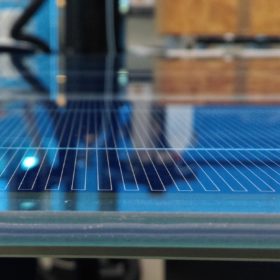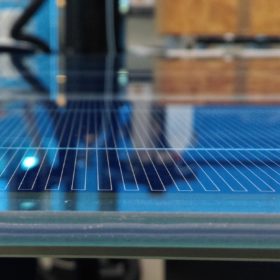A new method for transparent conducting glass that can make solar cells cheaper

Indian scientists have developed a hybrid design combining metal mesh and metal-oxide layer over the glass substrate, which brings down production cost by 80% compared to tin-doped indium oxide (ITO) based technology which is currently in use.
Scientists from Centre for Nano and Soft Matter Sciences (CeNS), Bengaluru—an autonomous institute of the Department of Science & Technology (DST), Government of India—have developed a novel recipe for fabrication of transparent conducting glass (TCG) that brings down its production cost by 80% compared to tin-doped indium oxide (ITO) based technology which is currently in use.
Thus, the TCG developed by CeNS have the potential to bring down the overall production cost of devices like smart windows, touch screens, solar cells and so on due to its low-cost processing cost.
The method
In recent years, the demand of transparent conducting glasses with high light transparency has tremendously increased due to their wide range of applications in optoelectronic devices such as solar cells, smart windows, touch screen/touch sensors, and so on.
Industrially relevant TCG use conducting coatings such as tin-doped indium oxide (ITO) with a few hundred nanometres of thicknesses, which have a significant cost attached to the slow deposition rates adopted for high-quality films.
The newly fabricated TCG consists of a metal mesh on a glass substrate with thin overlayers of metal oxides. The design is attractive as the hybrid electrode possesses the excellent conductive property of the metal mesh (having a sheet resistance of about 5 ohms/square) while offering an oxide surface finish for the conductive glass, which makes it match with the existing industry requirements based on ITO.
The CeNS team led by Prof. G.U. Kulkarni, and industrial partner Hind High Vacuum (HHV) have set up a semi-automated production plant funded by DST in CeNS campus for production of low-cost TCG.
Dr Ashutosh K. Singh, Scientist-C at CeNS who is working on this project, said, “We are fabricating various prototypes such as transparent heaters, transparent electromagnetic interference shields and smart windows based on TCG to showcase its potential applications. Further, these electrodes have been sent out for field tests in various industries and R&D laboratories.”
These TCGs are also available for onsite testing and validation purposes.
The CeNS work has been published in the journal Materials Chemistry and Physics.


